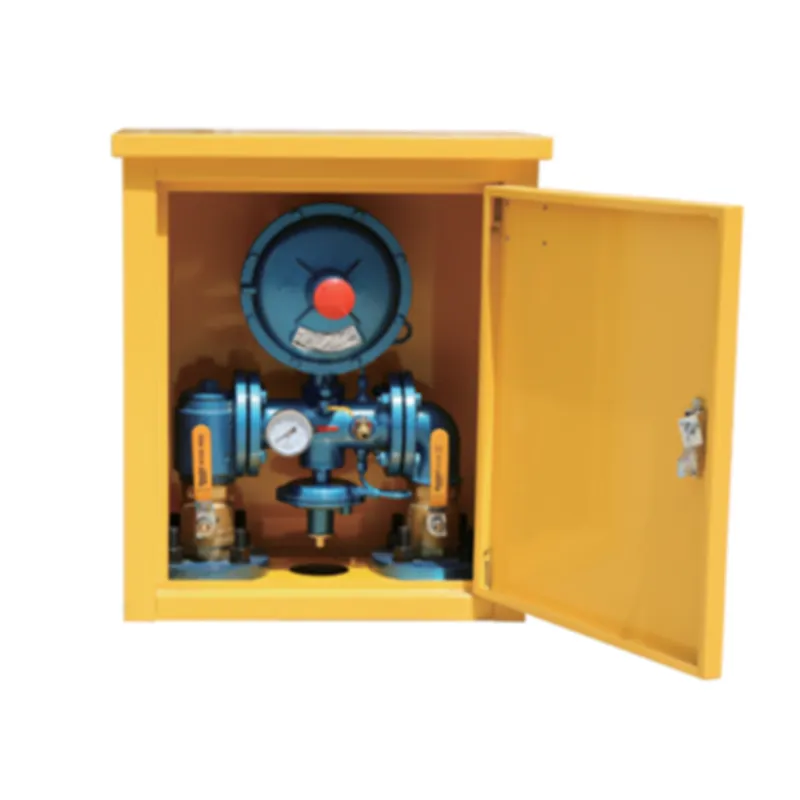
Dec . 04, 2024 16:46
Back to list
gas safety relief valve
Gas Safety Relief Valves Ensuring Safety in Gas Systems
Gas safety relief valves are critical components in various industrial and commercial systems that utilize gases, particularly in the oil and gas, chemical, and power generation industries. Their primary function is to prevent catastrophic failures caused by excessive pressure within gas systems. Understanding their operation, types, maintenance, and regulatory requirements is essential for ensuring a safe working environment and protecting both personnel and equipment.
What is a Gas Safety Relief Valve?
A gas safety relief valve is a safety device designed to automatically release excess pressure from a gas system, maintaining the pressure within safe limits. These valves are engineered to open at predetermined pressure levels, allowing gas to escape and preventing potential explosions or other dangerous situations. Once the pressure is reduced to an acceptable level, the valve closes automatically, resuming normal operations.
Types of Gas Safety Relief Valves
There are several types of gas safety relief valves, each suited for specific applications and operating conditions
1. Conventional Relief Valves These are mechanically operated valves that open in response to pressure exceeding a set point. They balance the mechanical forces of a spring and the static pressure of the gas.
2. Pilot-Operated Relief Valves These utilize a pilot valve to control the main valve, offering greater accuracy and responsiveness. They are often preferred in high-pressure applications due to their ability to handle larger volumes of gas.
3. Spring-Loaded Relief Valves These rely on a spring mechanism to keep the valve closed under normal operating conditions. When the system pressure rises, the spring compresses, allowing gas to escape.
gas safety relief valve

4. Balanced Relief Valves Designed to work effectively under varying pressure conditions, balanced relief valves incorporate a mechanism to minimize the effect of back pressure, making them suitable for systems where pressure can fluctuate significantly.
Importance of Gas Safety Relief Valves
The significance of gas safety relief valves cannot be overstated. They play a vital role in protecting equipment such as pipelines, pressure vessels, and compressors from pressure-induced damage. Inadequate pressure control can lead to hazardous situations, including explosions, fires, and gas leaks. These incidents not only pose risks to worker safety but can also result in significant financial losses and environmental damage.
In many cases, regulatory bodies mandate the installation of safety relief valves in gas systems. Compliance with safety standards and regulations is crucial for maintaining operational integrity and protecting public health and safety.
Maintenance and Testing
Routine maintenance and testing of gas safety relief valves are essential to ensure their proper functioning. Regular inspections help identify any potential issues, such as corrosion, leakage, or mechanical failure. Testing should be conducted in accordance with manufacturers' guidelines and industry standards, often requiring the valve to be cycled through its operational range to confirm its response to pressure changes.
Maintenance practices include cleaning the valve components, inspecting seals and springs, and replacing any worn or damaged parts. Ensuring that gas safety relief valves are in optimal condition is critical to their performance when needed.
Conclusion
Gas safety relief valves are indispensable for the safe operation of gas systems. They help manage pressure levels, preventing dangerous situations that could threaten lives and cause significant property damage. By understanding the different types of relief valves, adhering to maintenance schedules, and complying with regulatory requirements, industries can safeguard against the risks associated with gas systems. Investing in these safety devices translates into a commitment to safety, reliability, and responsible operation in gas applications.
Next:
Latest news
-
Safety Valve Spring-Loaded Design Overpressure ProtectionNewsJul.25,2025
-
Precision Voltage Regulator AC5 Accuracy Grade PerformanceNewsJul.25,2025
-
Natural Gas Pressure Regulating Skid Industrial Pipeline ApplicationsNewsJul.25,2025
-
Natural Gas Filter Stainless Steel Mesh Element DesignNewsJul.25,2025
-
Gas Pressure Regulator Valve Direct-Acting Spring-Loaded DesignNewsJul.25,2025
-
Decompression Equipment Multi-Stage Heat Exchange System DesignNewsJul.25,2025

